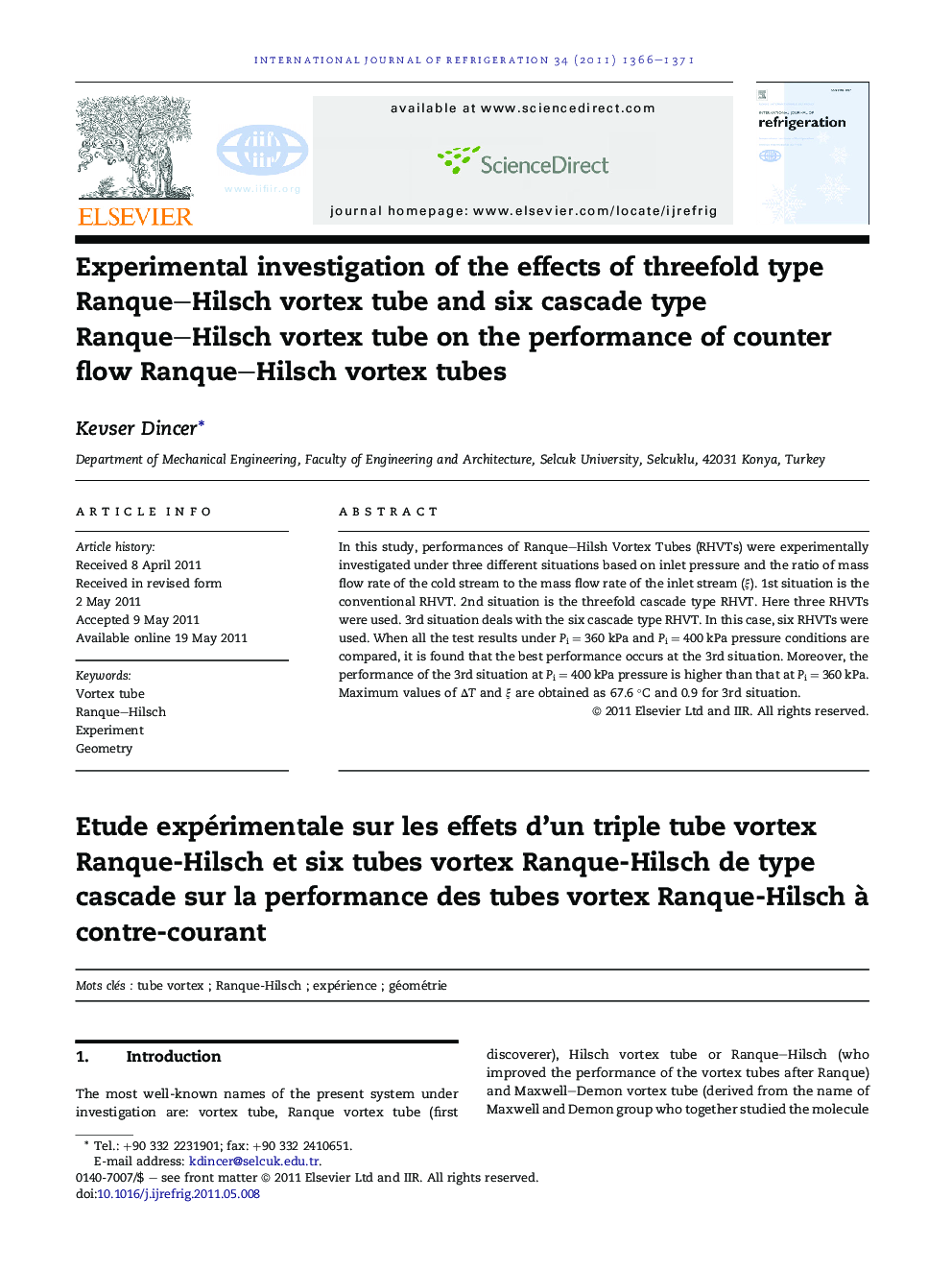| Article ID | Journal | Published Year | Pages | File Type |
|---|---|---|---|---|
| 787232 | International Journal of Refrigeration | 2011 | 6 Pages |
In this study, performances of Ranque–Hilsh Vortex Tubes (RHVTs) were experimentally investigated under three different situations based on inlet pressure and the ratio of mass flow rate of the cold stream to the mass flow rate of the inlet stream (ξ). 1st situation is the conventional RHVT. 2nd situation is the threefold cascade type RHVT. Here three RHVTs were used. 3rd situation deals with the six cascade type RHVT. In this case, six RHVTs were used. When all the test results under Pi = 360 kPa and Pi = 400 kPa pressure conditions are compared, it is found that the best performance occurs at the 3rd situation. Moreover, the performance of the 3rd situation at Pi = 400 kPa pressure is higher than that at Pi = 360 kPa. Maximum values of ΔT and ξ are obtained as 67.6 °C and 0.9 for 3rd situation.
Graphical abstractFigure optionsDownload full-size imageDownload as PowerPoint slideHighlights► Performances (ΔT = Thot–Tcold) of the Ranque-Hilsch Vortex Tube (RHVT) were exerimentally investigated under three different situations. ► The ΔT of the classic RHVT (1st situation), the difference between the hot outlet and the cold outlet temperatures of the first RHVT is ΔT1. ► The ΔT of the threefold cascade type RHVT (2nd situation), the difference between the Thot of the 2nd RHVT and the Tcold of the 3rd RHVT is ΔT23. ► The ΔT of the six cascade type of RHVT, the difference between the Thot of the 3rd RHVT and the Tcold of the 6th RHVT is ΔT36. ► Maximum values of ΔT and ξ (cold flow fraction) are obtained as 67.6 °C and 0.9 for 3rd situation.
